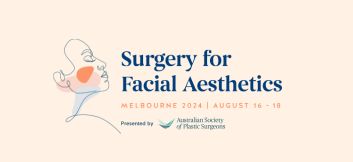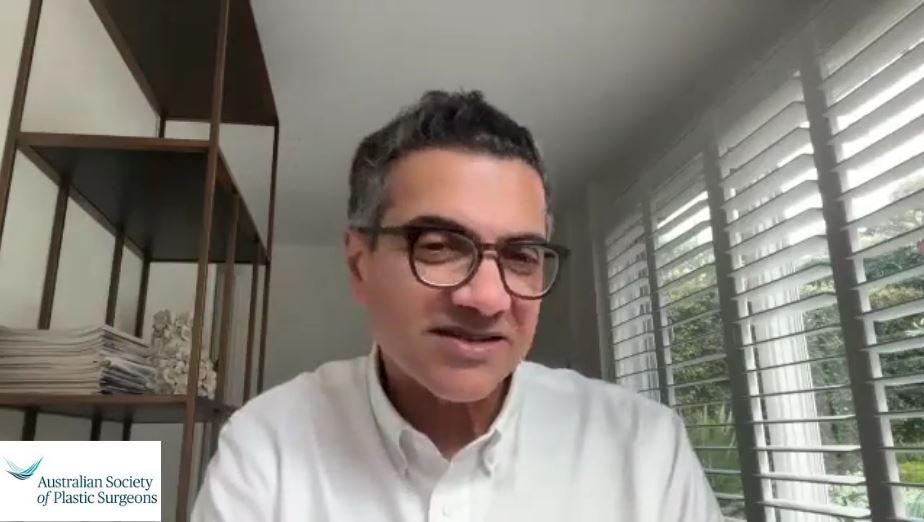FAQs on information about Breast Implant Associated Anaplastic Large Cell Lymphoma (BIA-ALCL)

The Therapeutic Goods Administration (TGA) has recently provided updated information regarding breast implant associated-anaplastic large cell lymphoma.
The TGA has been posting updated information about this condition since 2011 and this updated alert was been generated following a recent expert advisory panel in view of additional generated from research performed by a joint BIA-ALCL task force with representatives from the Australian Society of Plastic Surgeons, Australasian Society of Aesthetic Plastic Surgeons, New Zealand Association of Plastic Surgeons the Australian Breast Device Registry and the Peter MacCallum Cancer Centre.
#1 what is breast implant associated-anaplastic large cell lymphoma (BIA-ALCL)?
- A rare type of lymphoma that develops adjacent to breast implants
- It usually develops as a swelling of the breast 3 to 14 years after the insertion of breast implants which is due to fluid collecting around the implant or it can present as a lump in the breast or armpit
#2 BIA-ALCL is not same as breast cancer
- BIA-ALCL develops in the fluid around breast implant and is usually contained by the fibrous capsule around implants
- It does not develop in the breast tissue
#3 what are the symptoms of BIA-ALCL?
- The most common symptom is a persistent swelling of the breast but can include other symptoms such as a lump in the breast or armpit
- These symptoms develop between three and 14 years following the insertion of breast implants and most commonly around eight years
- The swelling of the breast is due to fluid accumulating around the implant The lymphoma develops around the breast implant in the fluid and in most cases is contained within the fibrous capsule the body makes around the implant and is not in the breast tissue itself
#4 what is the risk of developing BIA-ALCL?
- This is a rare disease and only about 50 patients have been identified in Australia and about 10 in New Zealand
- -Because this is a rare disease it is difficult to be certain about the absolute risk of developing this disease
- The risk may be around one in 5000 for women with breast implants (for each woman who develops this disease there are 4999 women who don’t)
- The risk of breast cancer is about one in eight women
#5 are some women more at risk than others?
- To date: no Australian or New Zealand cases have been reported in women who have only had smooth implants
- Based on current available data: it is uncertain whether textured implants of different types carry different risks
- It is not possible to predict who will develop BIA-ALCL
- It has occurred in women who have breast implants for cosmetic reasons and also for breast reconstruction It has occurred in women with both saline implants and silicone implants
#6 how is BIA-ALCL diagnosed?
- If a woman develops swelling of the breast which has an implant they are sent for an ultrasound scan and if fluid is detected this will be removed and tested for BIA-ALCL
- Specific tests are asked for to exclude or diagnose BIA-ALCL Most fluid collections around breast implants are not BIA-ALCL but proper testing will be able to tell them apart
- Mammograms are not useful in diagnosing BIA-ALCL In confirmed cases MRI and PET/CT scans may be performed to help stage the disease
#7 should women with breast implants be screened for BIA-ALCL?
- At this point expert opinion is that women without symptoms or changes in their breasts do not need regular ultrasound scans breast implants are not life long devices
- If there are changes in your breasts associated with breast implants and especially if there is general swelling or a lump you should have a breast examination and this may need to be investigated further
#8 what is the treatment of BIA-ALCL?
- The majority of cases are cured with the removal of implants and the fibrous capsule around them from both breasts.
- The majority of patients require no additional treatment.
- Less commonly additional treatment such as chemotherapy and radiotherapy may be required
#9 should breast implants be removed just in case?
- Breast implants are not lifelong devices and in general all will need to be removed or replaced at some point
- The commonest reasons for implant removal or replacement are capsular contracture, implant migration, implant rupture
- Without symptoms or signs of BIA-ALCL routine implant removal is not required unless there are other concerns
#10 do we know what causes BIA-ALCL?
- Australian and New Zealand Plastic Surgeons in partnership with local and international research organisations are at the forefront of investigating this disease and we are working proactively with the government to keep them informed (Therapeutic Goods Administration -TGA and Medsafe in New Zealand)
- Bacteria have been identified within the lymphoma and around implants in affected breasts
- There is accumulating evidence that a long-term inflammatory response to the presence of these bacteria is one of the factors that may cause of BIA-ALCL
- There may also be genetic factors involved for individual women
- We are continuing to investigate this disease to improve our understanding
#11 are there ways to make breast implant surgery safer?
- There is accumulating evidence that bacteria are associated with other complications of breast implant surgery as well such as the risk for capsular contracture which does not lead to cancer
- Infection control standards are extremely important in breast surgery to ensure best outcomes and Specialist Plastic Surgeons are expertly trained to ensure the highest standards of patient safety and lowest risk of infection
#12 what should you do if you are concerned about your breast implants?
- Firstly you should contact your surgeon and if you are unable to do this you should see your GP for a referral to a Specialist Plastic Surgeon
- If you have swelling of the breast associated with a breast implant you may need a referral for an ultrasound to remove some fluid for testing and this will be able to determine if BIA-ALCL is present
- Immunohistochemistry is performed to identify a T-cell lymphoma that is positive for the CD30 receptor protein (CD30+) and negative for the anaplastic lymphoma kinase gene translocation (ALK-)
- Most breast swelling that occurs after breast implants is not due to BIA-ALCL however it does needs to be excluded
#13 can new breast implants be inserted when BIA-ALCL is treated?
- Current treatment protocols indicate that the removal of both breast implants with the capsule around them is required because a small number of cases that have been diagnosed on both sides at the same time
- Implants are not replaced at the same operation
- Smooth implants have been re-inserted 12 months following the adequate treatment of BIAALCL without disease progression however the safety of this strategy is still being investigated
#14 where can I get more information?
- The Therapeutic Goods Administration (TGA) is the government body responsible for the approval of the use of all medical devices including breast implants
- The TGA has recently updated its public information about BIA-ALCL. https://www.tga.gov.au/alerts
#15 what should I do if I am considering breast implants?
- Women who are considering breast implant surgery should discuss the risks and benefits of the procedure with their Plastic Surgeon including the risks of BIA-ALCL
- There are different implant types available and implant selection needs to take into account the risks and benefits of specific choices.
- Implant selection will be different from one person to the next.
- Breast implants are not lifetime devices and women with breast implants should all consider that they will require revision or replacement of the breast implants at some time.
Media enquiries: Sandra Renowden 0403823218 or sandra@mohrpr.com.au
Featured Stories

ASPS Media Statement: Dr David Morgan as new President
Australian Society of Plastic Surgeons elects Dr David Morgan as…
Continue reading Like
Like

